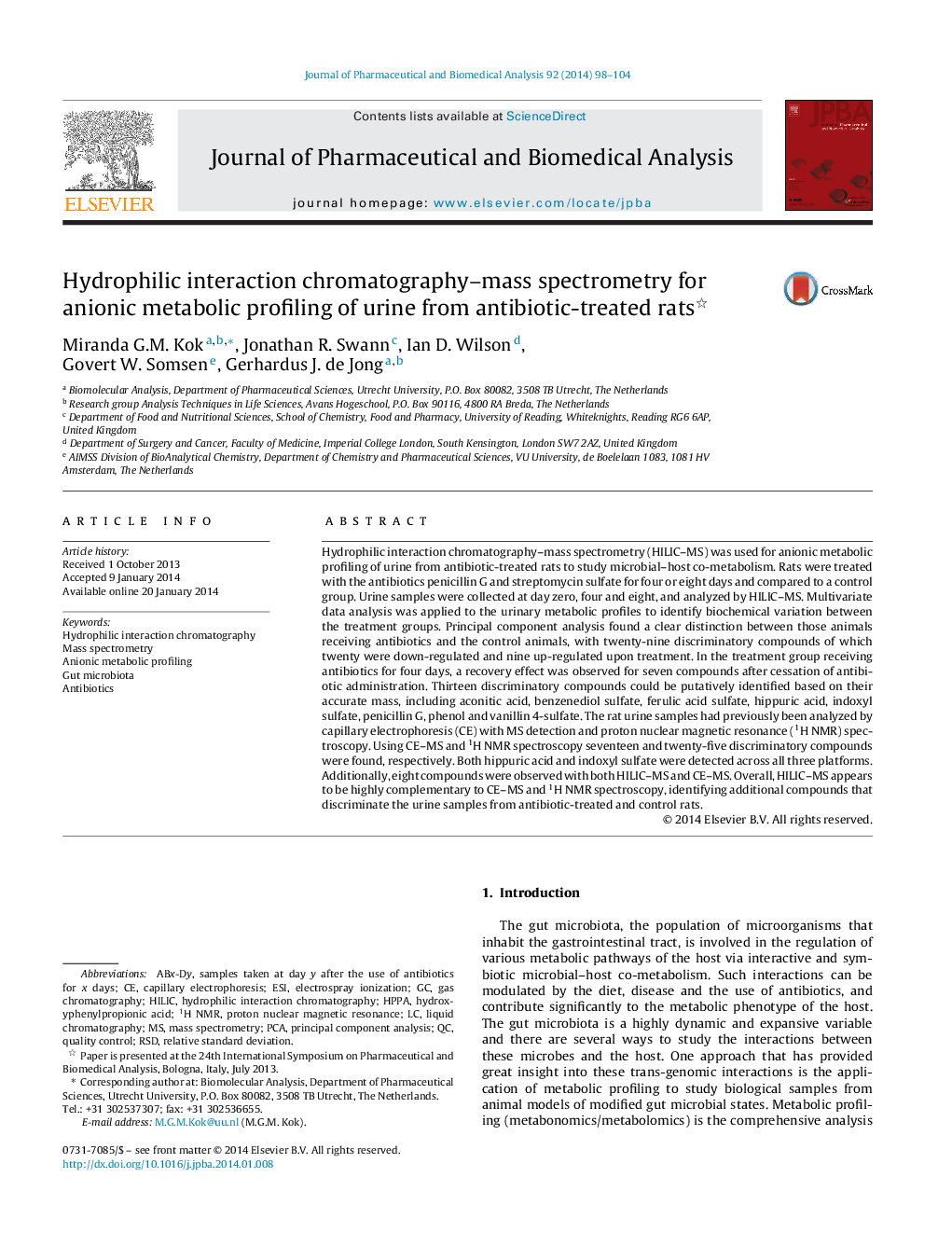| کد مقاله | کد نشریه | سال انتشار | مقاله انگلیسی | نسخه تمام متن |
|---|---|---|---|---|
| 1221763 | 1494643 | 2014 | 7 صفحه PDF | دانلود رایگان |
• HILIC–MS in negative ionization mode allows study of microbial–host co-metabolism.
• Using PCA, urine samples from rats receiving different antibiotic treatments can be distinguished.
• HILIC–MS reveals twenty-nine metabolites to be modulated by antibiotic exposure.
• HILIC–MS is highly complementary to CE–MS and 1H NMR spectroscopy.
Hydrophilic interaction chromatography–mass spectrometry (HILIC–MS) was used for anionic metabolic profiling of urine from antibiotic-treated rats to study microbial–host co-metabolism. Rats were treated with the antibiotics penicillin G and streptomycin sulfate for four or eight days and compared to a control group. Urine samples were collected at day zero, four and eight, and analyzed by HILIC–MS. Multivariate data analysis was applied to the urinary metabolic profiles to identify biochemical variation between the treatment groups. Principal component analysis found a clear distinction between those animals receiving antibiotics and the control animals, with twenty-nine discriminatory compounds of which twenty were down-regulated and nine up-regulated upon treatment. In the treatment group receiving antibiotics for four days, a recovery effect was observed for seven compounds after cessation of antibiotic administration. Thirteen discriminatory compounds could be putatively identified based on their accurate mass, including aconitic acid, benzenediol sulfate, ferulic acid sulfate, hippuric acid, indoxyl sulfate, penicillin G, phenol and vanillin 4-sulfate. The rat urine samples had previously been analyzed by capillary electrophoresis (CE) with MS detection and proton nuclear magnetic resonance (1H NMR) spectroscopy. Using CE–MS and 1H NMR spectroscopy seventeen and twenty-five discriminatory compounds were found, respectively. Both hippuric acid and indoxyl sulfate were detected across all three platforms. Additionally, eight compounds were observed with both HILIC–MS and CE–MS. Overall, HILIC–MS appears to be highly complementary to CE–MS and 1H NMR spectroscopy, identifying additional compounds that discriminate the urine samples from antibiotic-treated and control rats.
Figure optionsDownload as PowerPoint slide
Journal: Journal of Pharmaceutical and Biomedical Analysis - Volume 92, 15 April 2014, Pages 98–104
